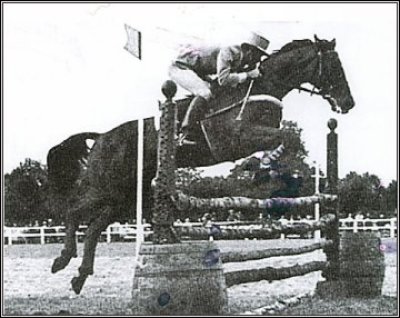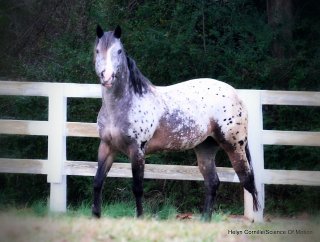Mechanoresponsiveness PT 10
Mechanoresponsiveness
Part 10
As everyone know, we cannot lie to a horse. A horse cans smell anger or fear or even feels energy. At muscular level, we cannot lie to a horse either. We can willingly believe in superficial theories but a horse does not perform at the level of our fantasies. The reality is systems within systems within systems that have to be carefully orchestrated. We can believe in straightening a horse between a whip and the wall, we can claim success having the horse travelling with the shoulders in front of the haunches but between the shoulder and the haunches a crooked thoracoumbar spine induces discomfort, poor performance and limbs kinematics abnormalities predisposing the horse to lameness.
In the late fifties, the biologist Pennyquick observed that animals migrating long distances in Africa maintained within each gait a consistent speed. He studied the phenomenon from the perspective of oxygen consumption and found that it was a speed for each gait where animals covered a longer distance for a given oxygen intake. It was at this time regarded as an interesting observation. Later the phenomenon was studied at the level of muscular energy demonstrating that less energy was needed at a given cadence. The concept of the natural frequency or cadence has since evolved from a curiosity to a fundamental principle of locomotion down to the relation between contractile cells and tendinous materials within the muscles belly. “Because the muscle is composed of both muscle fibers and tendinous materials, all of these structures must be collectively ‘tuned’ to the spring properties for the muscle-tendon system to store and recover elastic energy during locomotion.” (LaStayo and all)
Each horse does have its own frequency. The natural cadence of one horse can be faster than another horse. It is this observation that makes me decide to remove Quolibet from the school horse program.  I observed this school horse giving hard time to every students walking on the heels of the previous horse during group lessons or put in circles to control his speed. The horse was sick and scheduled to be “reformed” and therefore put to sleep, with the next group of reform. It was the way the military system worked. I was impressed by his courage thinking that this poor horse was on a dead row and he was giving hard time to everybody and himself simply because his natural cadence was faster that the average horses. I took him in my personal group of horses simply to ease the last months of his life. He turned out that the sickness was misdiagnosed and he performed very well in three-day event all the way to the World Championship of Punchestown in 1971.
I observed this school horse giving hard time to every students walking on the heels of the previous horse during group lessons or put in circles to control his speed. The horse was sick and scheduled to be “reformed” and therefore put to sleep, with the next group of reform. It was the way the military system worked. I was impressed by his courage thinking that this poor horse was on a dead row and he was giving hard time to everybody and himself simply because his natural cadence was faster that the average horses. I took him in my personal group of horses simply to ease the last months of his life. He turned out that the sickness was misdiagnosed and he performed very well in three-day event all the way to the World Championship of Punchestown in 1971.
If filaments titin is functioning as a locomotor spring, they have to be tuned to the frequency of the muscle use. LaStayo and his team verified the hypothesis by studying titin isoform expression in muscles that are used cyclically at different frequencies. The hypothesis has been recently supported by studies demonstrating that titin isoform is an adaptable property of striated muscles. Experiment on human demonstrated that the muscular work was double when the athlete was asked to perform slower that his natural frequency. At the other end of the spectrum, when the cadence is faster than the athlete’s natural frequency, the benefits of the stretch-shorten contractions are lost. There is truly one cadence per human as well as per horse where the metabolism functions at its greatest efficacy.
I have used a slower cadence for therapeutic purpose as well as specific muscular work. This is very effective but has to be done with great cautiousness. The approach can be beneficial only when the horse is properly using the muscular system of his back. The coordination between limbs movements and longitudinal flexions, lateral bending and transversal rotation of the thoracolumbar spine have to be very well established as further slowing the work will increase proper and sound work of the back muscles but also unsound work of the same muscles.
In order to fit step by step the music, I had to slow down Lafayette walk below its natural cadence. He never lost the correctness of his collected walk and indeed, gained muscle mass and body control through the experience but Lafayette was very well coordinated and already muscularly developed working at its natural frequency before asking him to slow his pace even more. Since, the technique has been applied for the rehabilitation of the several horses including the mare named Diva  which had double ring bone around the joint between the second phalange and the coffin bone. We described her rehabilitation in the article, “Chazot talk 41, Special thanks giving thoughts.” This is very efficient but cannot be done half way.
which had double ring bone around the joint between the second phalange and the coffin bone. We described her rehabilitation in the article, “Chazot talk 41, Special thanks giving thoughts.” This is very efficient but cannot be done half way.
Only the in hand technique acting on proper coordination and refinement of the back muscles, as we practice at the science of motion, can prepare the horse’s back for this type of therapy. All the in hand techniques focusing on the neck posture with two hands on the reins and the whip, are inept in educating the muscular system of the horse thoracolumbar column. Horses trained this way do not collect the walk refining the coordination of the back muscles. Instead, they contract the back muscles in isometric hold disconnecting vertebral column mechanism and limbs movements. The dysfunction lead to lateralization, marching band type of walk, and can only be aggravated by further slowing down the motion. We repeat all the time. It is not because the horse slows down the walk that he lifts the back. It is because the horse lifts the back that as a consequence the pace slows down. When the initial thrust generated by the hind legs is converted through the muscular system of the thoracolumbar spine into greater vertical forces, lesser horizontal forces reduce the speed.
Many riding and training techniques focus on one scale and are not aware of the damages created at a deeper scale. Our ancestors promoted hardening tendons and bone density trotting on hard surface. There is no doubt that impact forces are part of the process but at a deeper scale, hard impacts create microcracks and microfractures in the subchondral bone which evolve creating arthritis in the cartilage of the joints. Greater efficiency combining softer impact forces on softer ground and high forces on the bone created by eccentric contractions. “The suggestion that eccentric training, because it produces the higher muscle force on the bone during resistance exercise, should also result in the greatest bone adaptation is alluring.” We applied this attractive hypothesis with great successes. Our practical application was not the typical experiment with control group. It was the real thing. Scientific research is only useful if it can be applied. Our practical application was the ultimate purpose of all these studies, better prepare superior athletes for the higher level of equine athletic performances. We prepared World class and Olympic level athletes for the most demanding athletic performance, which is the endurance phase of a thee day event competition. The practical application was not limited to one horse but instead dozens of horses. The horse presented on this picture was a thoroughbred trained this way. He reached International level and was retired after his performance at the 1984 Rolex Kentucky Olympic selection trial.  The horse was 16 years old. He started a second career in dressage where he reached FEI level. He was put to rest at age 29, with perfectly sound legs but a spleen cancer that was destroying his superb body.
The horse was 16 years old. He started a second career in dressage where he reached FEI level. He was put to rest at age 29, with perfectly sound legs but a spleen cancer that was destroying his superb body.
“The existence of discrete network within discrete networks in bones, cartilages, tendons and ligaments optimizes their structural efficiency as well as energy absorption.” (Christopher S. Chen and Donald E. Ingber. Tensegrity and mechanoregulation: from skeleton to cytoskeleton, 1999) As long as the whole process of education and rehabilitation is not limited to one network.
Jean Luc Cornille
Learn About our IHTC Course



 twitter
twitter facebook
facebook digg
digg google
google stumbleupon
stumbleupon pinterest
pinterest linkedin
linkedin newsvine
newsvine reddit
reddit linkuj.cz
linkuj.cz bookmarky.cz
bookmarky.cz